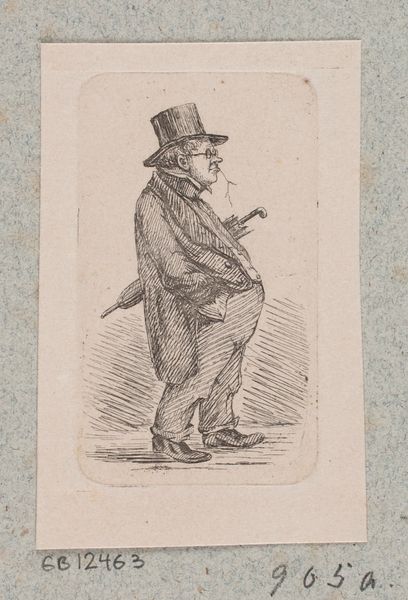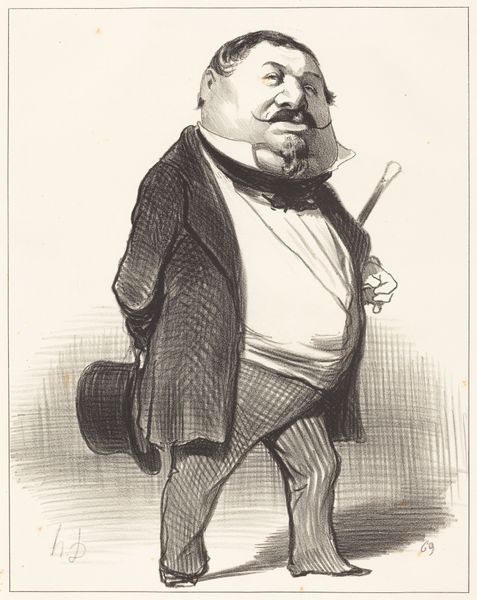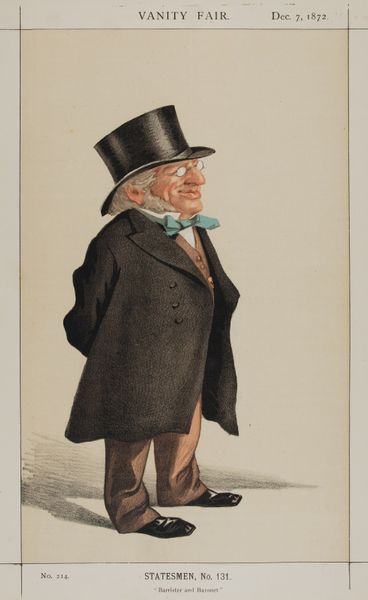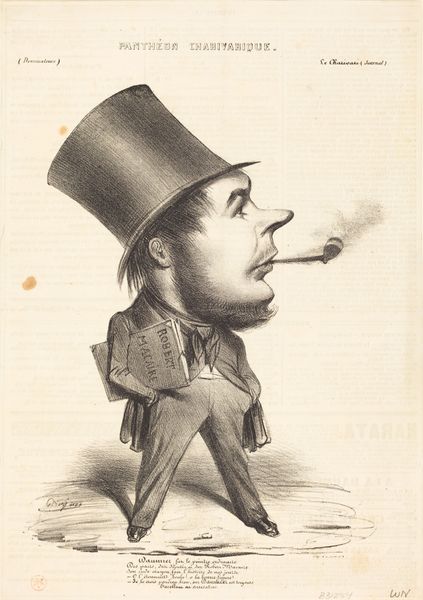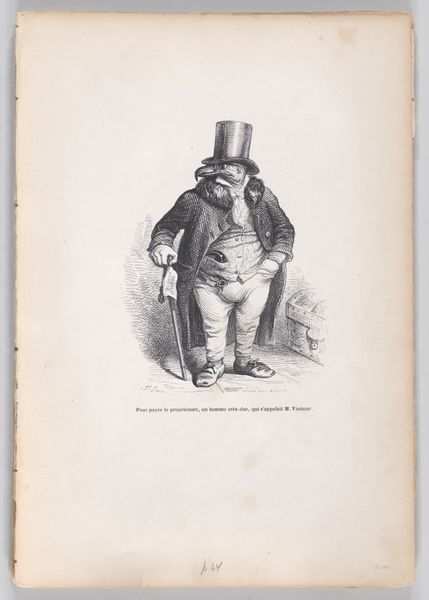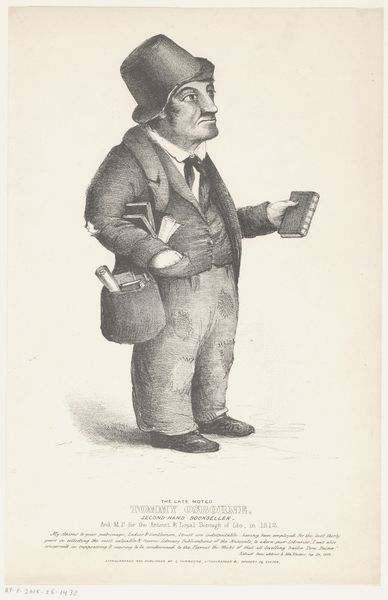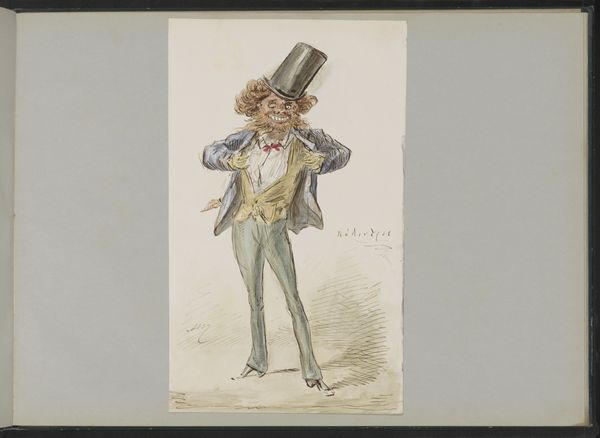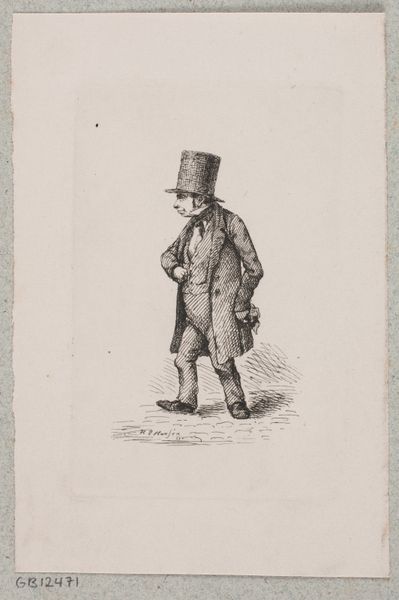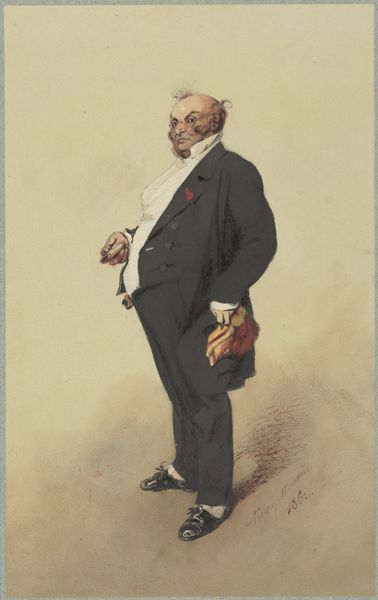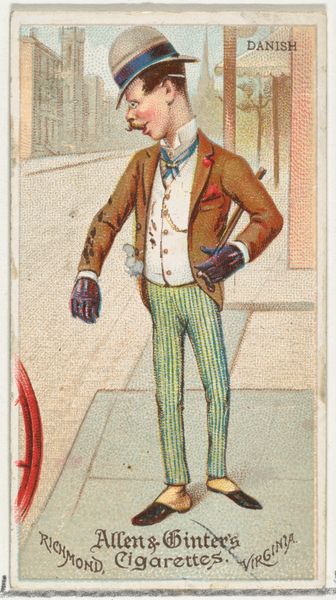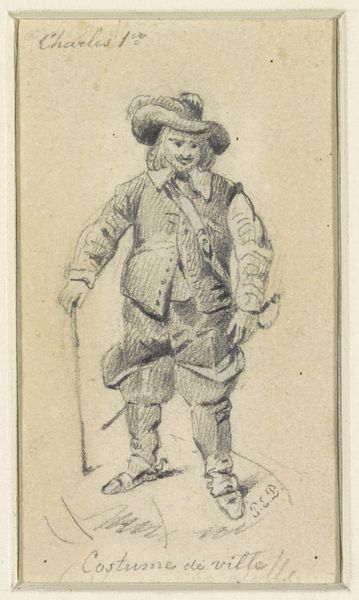
print, etching, paper
#
portrait
# print
#
impressionism
#
etching
#
caricature
#
caricature
#
paper
#
romanticism
#
portrait drawing
#
genre-painting
Copyright: Public domain
Editor: Here we have "William Henry Vanderbilt," a print by Cassius Marcellus Coolidge. It’s a rather unusual piece, with a strong element of caricature. What exactly am I looking at here? Curator: You're observing a pointed critique wrapped in the playful guise of caricature. Consider the Gilded Age context: immense wealth concentrated in the hands of a few industrialists like Vanderbilt, a system perpetuated, in part, by relaxed regulation. This etching uses exaggeration to suggest something about Vanderbilt's character and perhaps the era itself. Editor: So, the trains, is that about the Vanderbilt railway empire? Curator: Precisely. And note the phrase "Every Man Rides His Own Hobby" above his head. This positions Vanderbilt's business pursuits not as necessary engines of commerce but as a childish obsession. Is Coolidge legitimizing capitalist greed as just another 'hobby' or satirizing how some might think that? It could even be taken at face value, referring to a literal child's train, if the size wasn't absurdly tiny for a grown man. What do you make of that duality? Editor: Hmm… it seems cynical, like it's calling attention to the way wealth is acquired and perhaps trivialized, despite having immense consequences. Curator: Absolutely. Caricatures such as this one were tools to challenge figures like Vanderbilt. Such artistic commentaries gained popularity alongside burgeoning mass media. It’s easy to think the visual language is 'dated' today, yet, how many contemporary political cartoons circulate via our socials that provoke reaction? It seems we're seeing the beginnings of something like that here. Editor: That makes a lot of sense! I had just seen a funny-looking drawing; now I understand its potential cultural significance and what that says about society. Curator: Indeed. It’s a reminder that art often serves as a mirror reflecting the socio-political currents of its time.
Comments
No comments
Be the first to comment and join the conversation on the ultimate creative platform.
